Telok Ayer Chinese Methodist Church discovers 100-year-old time capsule
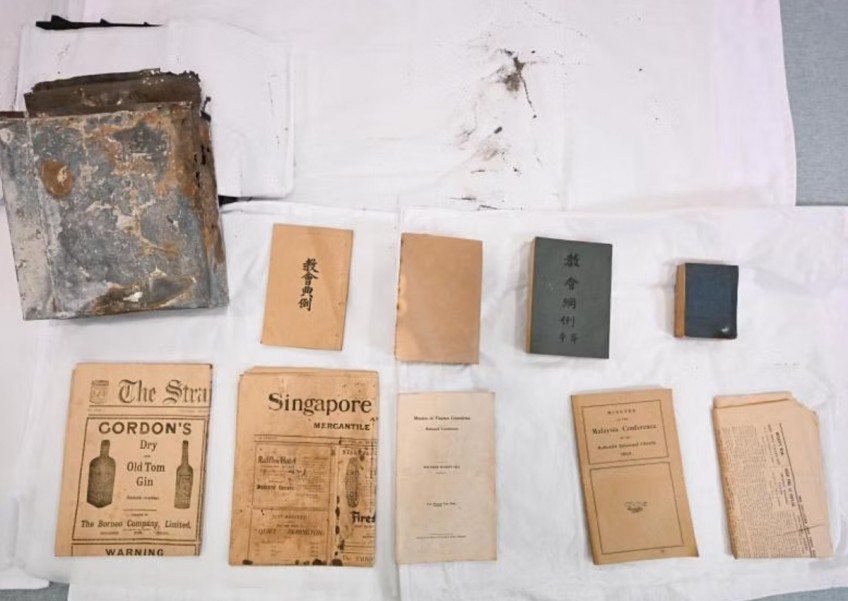

SINGAPORE — Among the stories passed down by generations of Telok Ayer Chinese Methodist Church members are those of the church's role during World War II, when it provided shelter from bombs to people living in the area and beyond — including the relatives of a current church member.
Almost a century old, the church's building in Telok Ayer has a storied past, having witnessed several milestones in Singapore's history.
But one story about the building containing a time capsule had circulated over decades with seemingly no substantiation or conclusion until Feb 7, when a century-old steel box was pulled from the church's wall.
Opened at the church's second building in Wishart Road, Telok Blangah, on Feb 14, the capsule contained a Bible, a hymnal and meeting minutes, among other items.
Tan Chew Lim, 74, a lay leader of the church and a retired professor in computer science, said regular churchgoers had heard by word of mouth that the church contained a time capsule, but no concerted effort was made to recover it over the years.
That changed about two months ago, when members of the church's archives committee — which is currently curating materials for a heritage gallery to be launched in celebration of the church building's 100th anniversary in 2025 — discovered an article from The Malayan Saturday Post that detailed the laying of the church's foundation stone on Jan 9, 1924, and the placement of the time capsule under it.

Goh Yat Teck, who heads the church building's centennial celebration committee, pursued the lead in the 1924 article and worked with other church leaders and consultants for the church's ongoing restoration works to locate and extract the time capsule.
The 72-year-old said he had envisioned laying a time capsule as part of the upcoming celebration, and was pleasantly surprised to be able to retrieve one placed by the church a century ago.
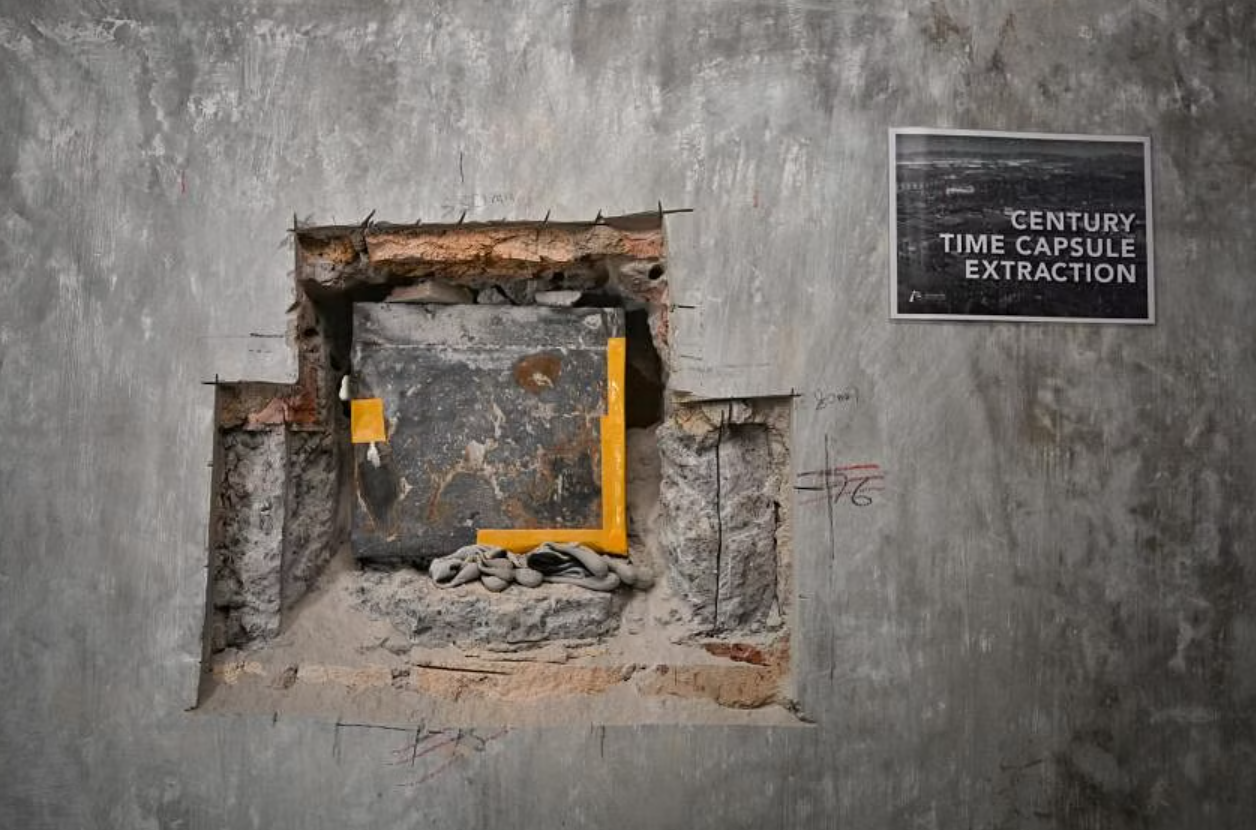
"I'm very excited, now we have something to display during the church building's 100-year exhibition," quipped Mr Goh, adding that the church building's centennial celebrations have "suddenly become a big event" with the discovery, arousing even the curiosity of The Methodist Church in Singapore, which oversees Methodist churches here.
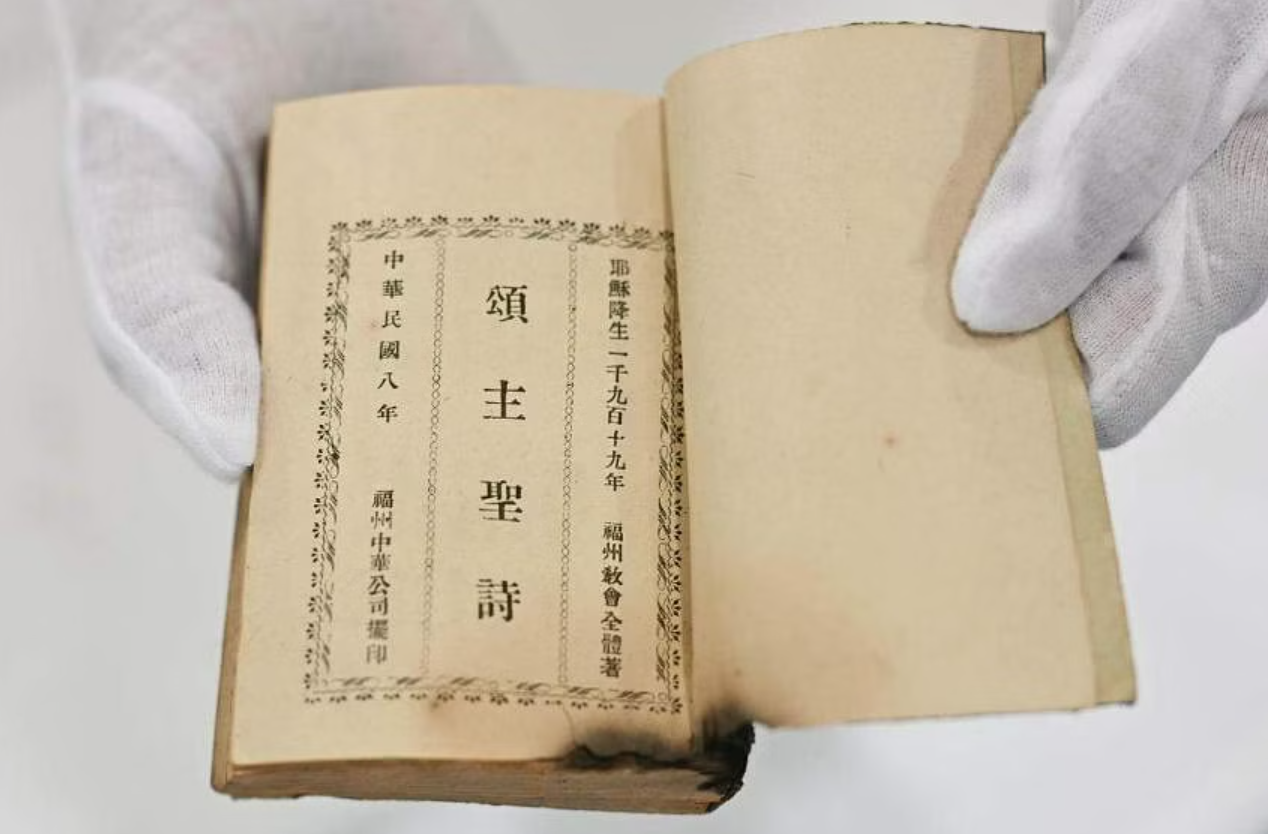
Founded in 1889, Telok Ayer Chinese Methodist Church is the first Chinese Methodist Church in Singapore, established about four years after Methodist missionaries arrived in 1885.
Its Telok Ayer building — gazetted a national monument in March 1989 — was completed in 1925 and is currently closed for extensive restoration works, which are slated to be done in January 2025.
The building last underwent major restoration works in the early 1990s.
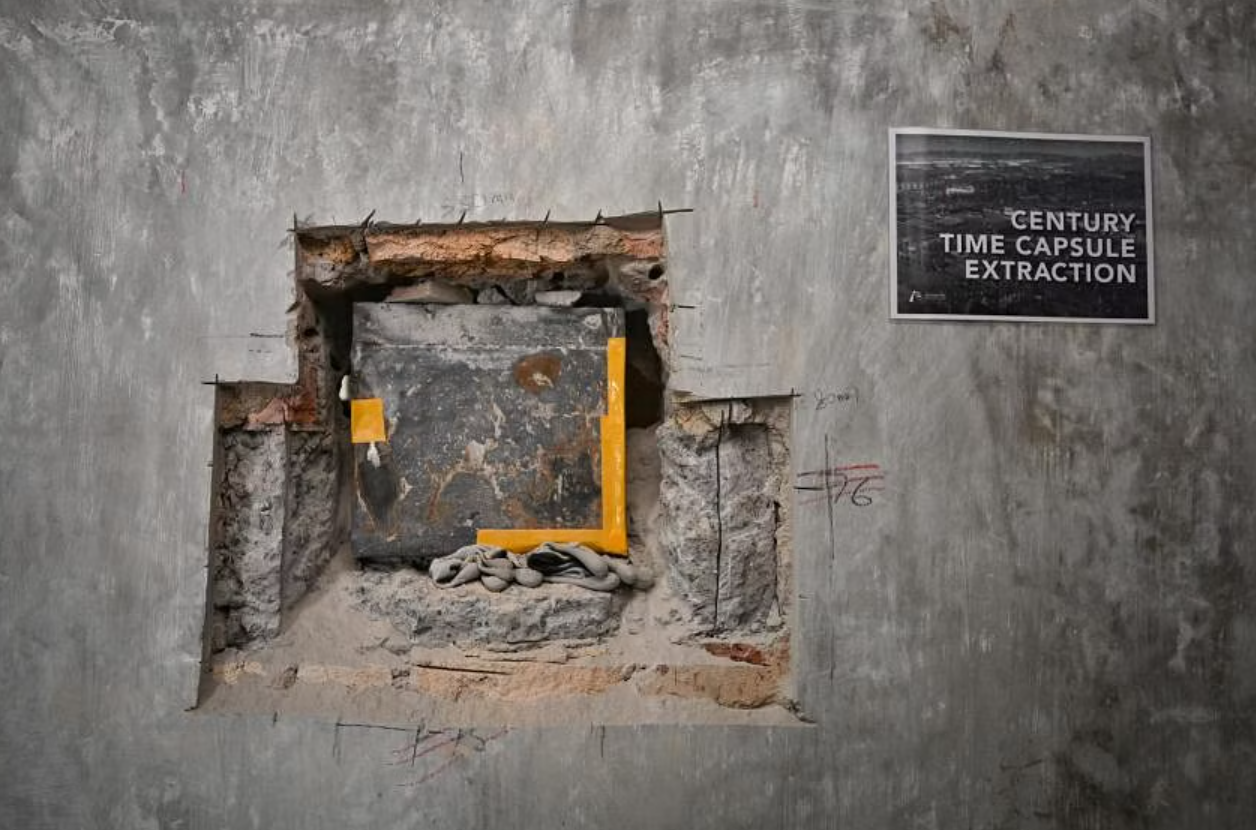
Among the artefacts from the capsule that might offer clues about the evolution of the Methodist faith here is a Chinese translation of the original 1784 Book of Discipline of the Methodist Episcopal Church — a "rule book" for Methodist churches, which had its first version published in the United States.
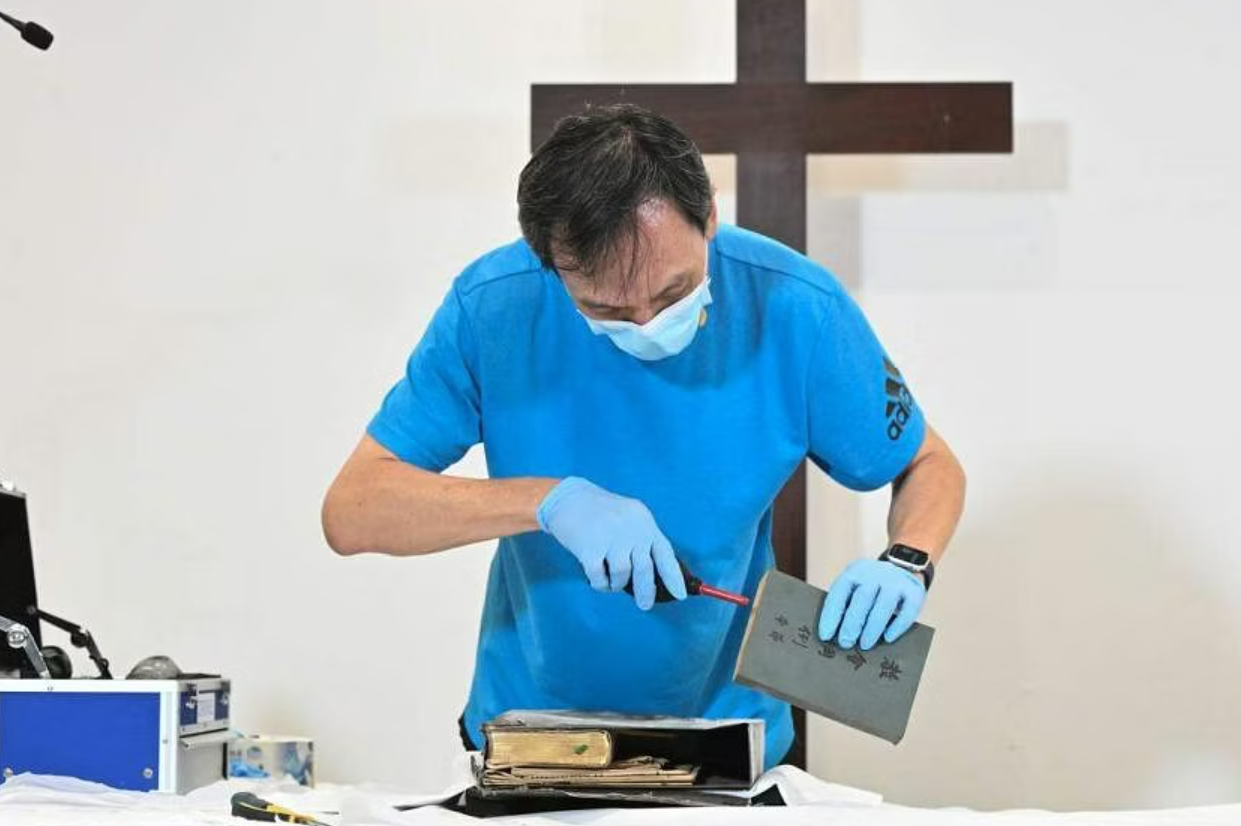
While Methodist churches in Singapore have since 1976 been governed by a Book of Discipline published and regularly reviewed by the local Methodist governing body, a comparison of the capsule's rule book with one presently used is likely to yield insights on historical changes in the church.
The capsule also contained minutes of a 1923 meeting by the Finance Committee of the Malaysia Conference of the Methodist Episcopal Church, which bore the names of Anglo-Chinese School and Methodist Girls' School, reflecting the ties these institutions have to the Methodist movement in Singapore.
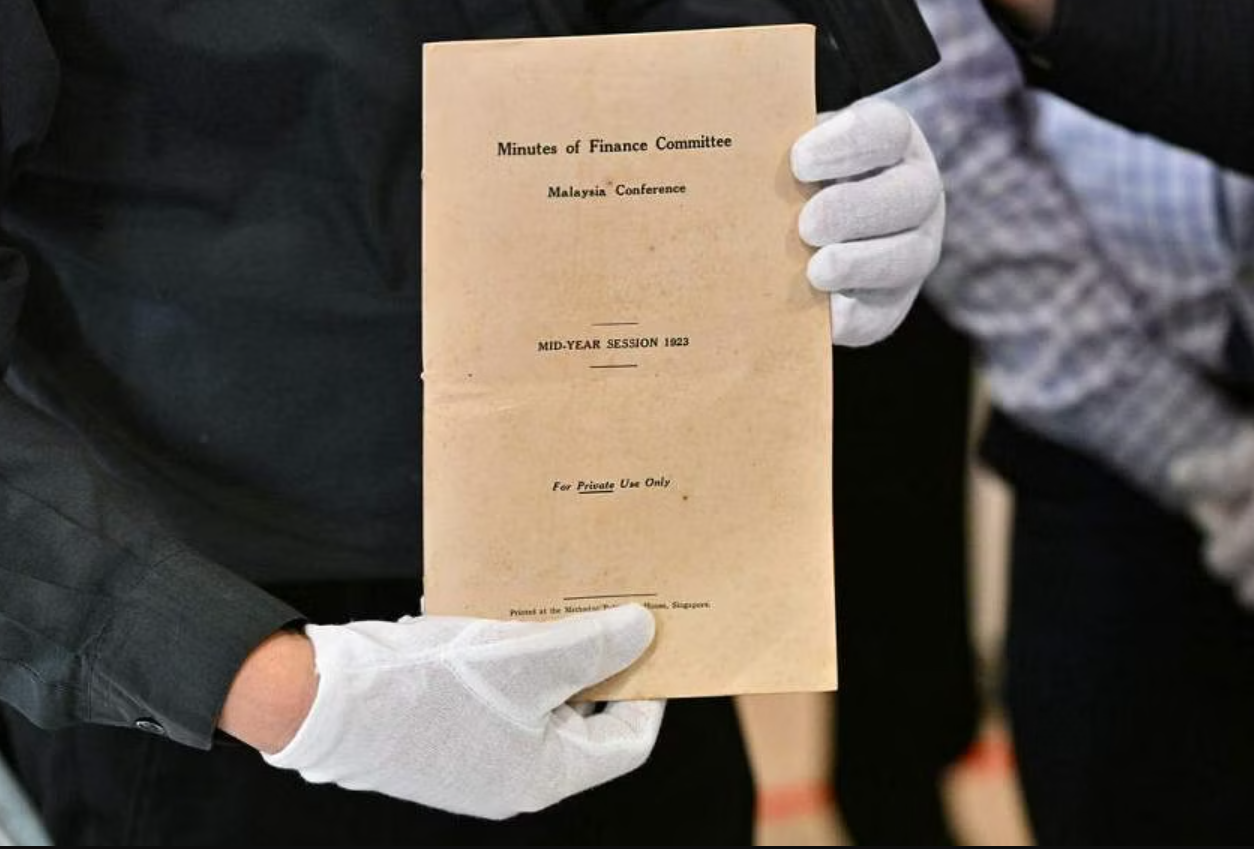
Overseeing an about six-hour-long extraction procedure on Feb 7 was Wong Chung Wan, technical director of material specialist Maek Consulting.
Church leaders both on-site and online watched on, with about 20 of them joining in at any point of time to observe the proceedings virtually via videoconferencing platform Zoom.
Wong's team started by using a surface penetrating radar to identify the exact position of the capsule underneath the church's marble foundation stone, which was laid on a wall facing Telok Ayer Street.
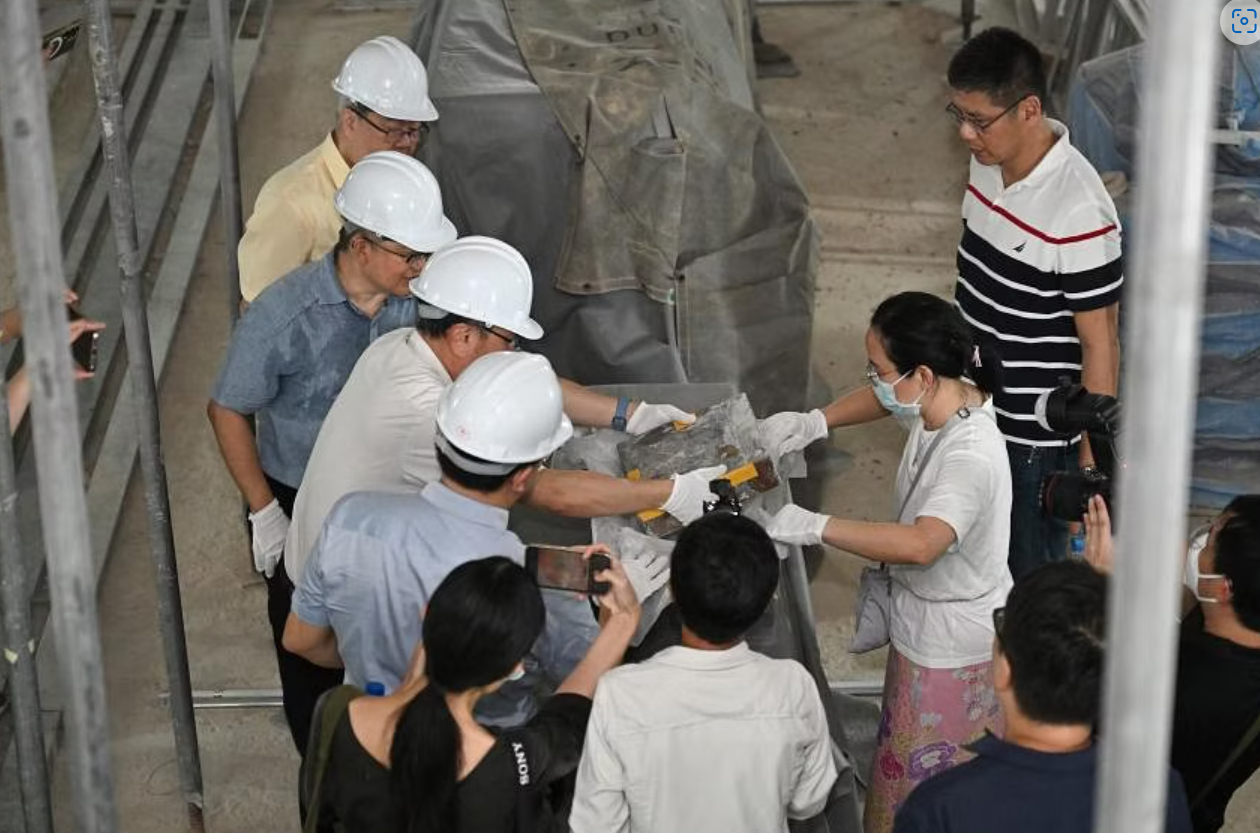
Once the position was confirmed, contractors removed the wall layer by layer, cutting through plaster and other materials to expose the time capsule.

But they encountered several challenges as they dug.
First, a portion of the time capsule was directly underneath the foundation stone when accessed from the side of the wall facing Telok Ayer Street.
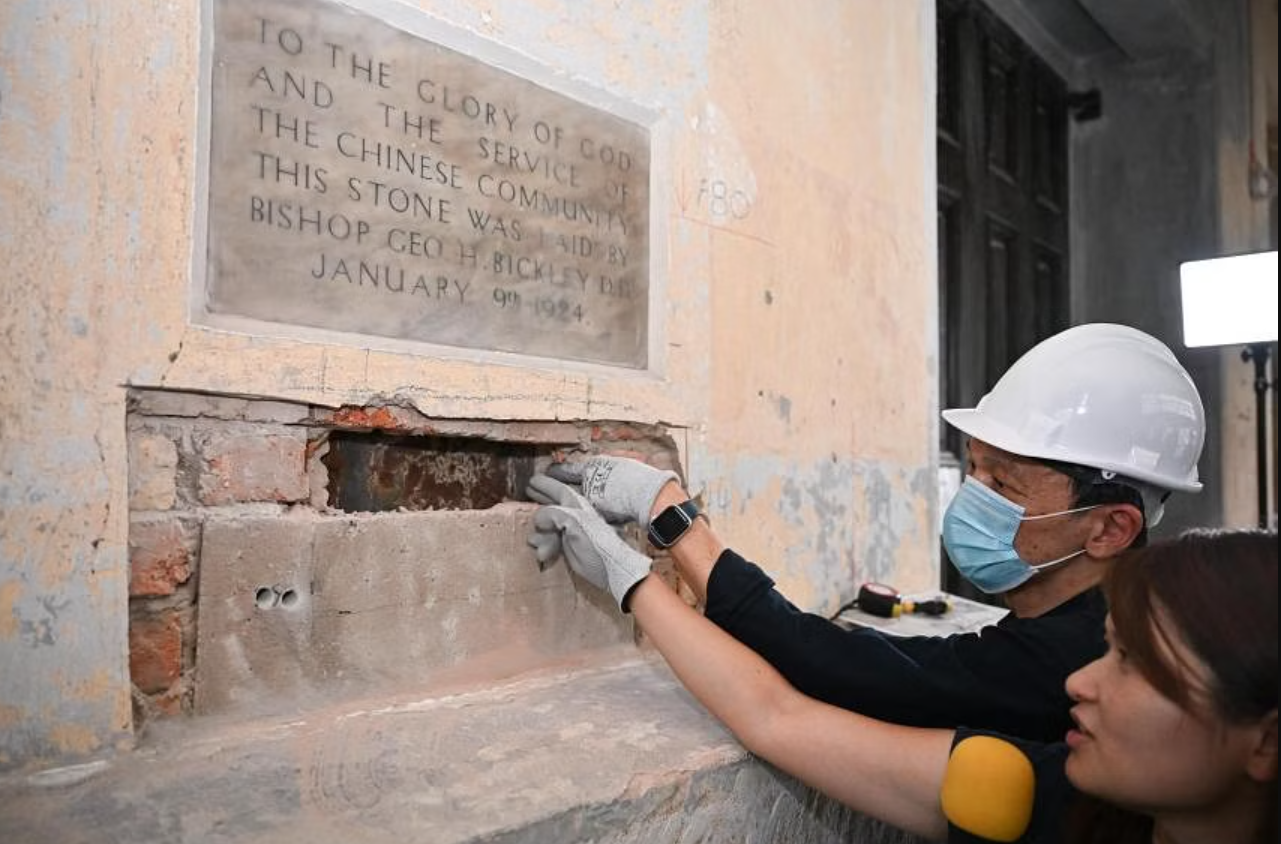
As extracting the capsule from this side of the wall would increase the risk of damaging the stone, a decision was made to instead remove the capsule from the other side of the wall.
Second, there was no cavity surrounding the time capsule, which would have allowed it to be easily removed when exposed.

Instead, the capsule had been embedded into the wall, within what seemed like a concrete cradle that was created to hold it, then covered with bricks and mortar.
The tight construction made it as if the capsule was one of the bricks forming the wall, Wong said.
As such, cuts had to be made according to the outline of the box in the brick-and-mortar portions of the wall that surrounded it, leading to a protracted extraction that took about twice as long as initially predicted.
At about 5.10pm on Feb 7, Reverend Gregory Goh, president of The Methodist Church in Singapore's Chinese Annual Conference — a grouping of 17 of the 46 churches under the larger Methodist body — removed the capsule, which measured 30cm by 30cm by 5cm.
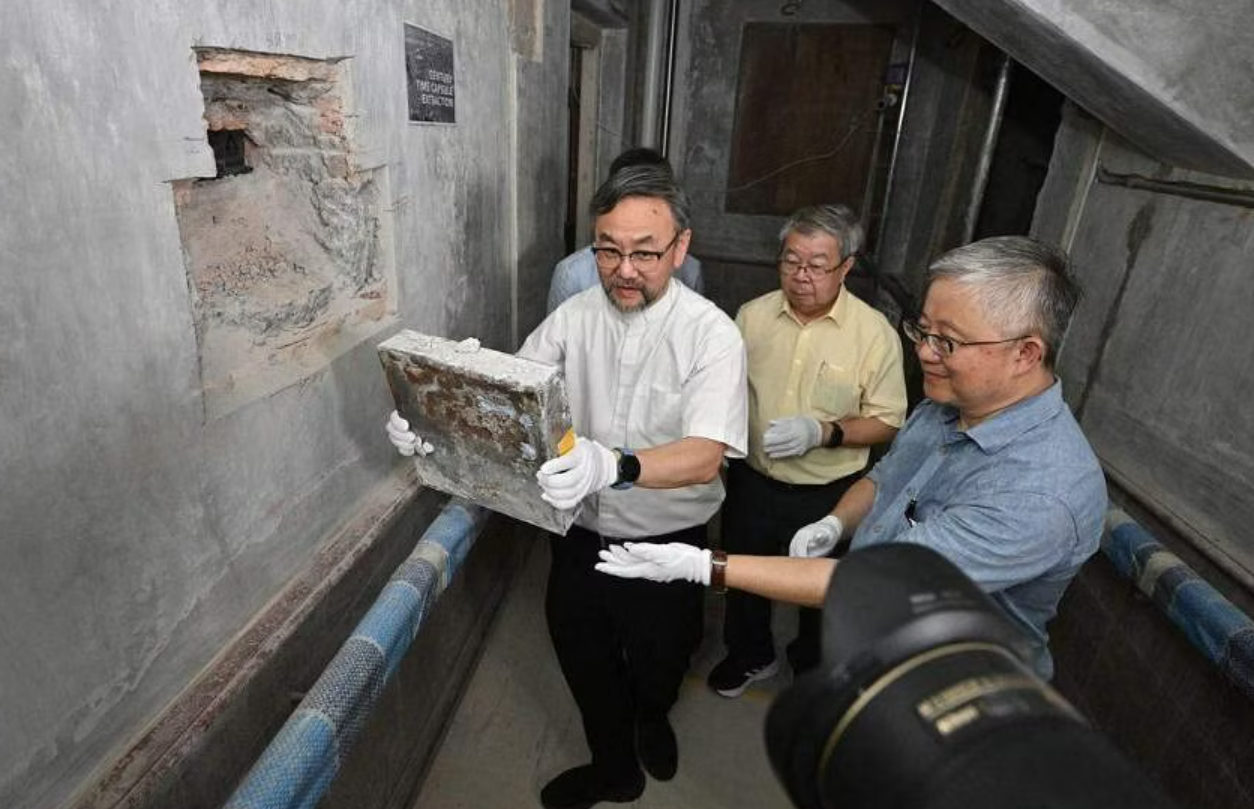
To avoid damaging the capsule and its contents, those handling it had to put on gloves.
The box was left to rest on acid-free paper in an environment with a humidity of about 50 per cent, prior to being opened.
Rev Goh said he felt a sense of reverence and awe when he held the capsule for the first time.
"I felt connected to our forefathers, and encouraged that their act of faith has stood for 100 years," he said.
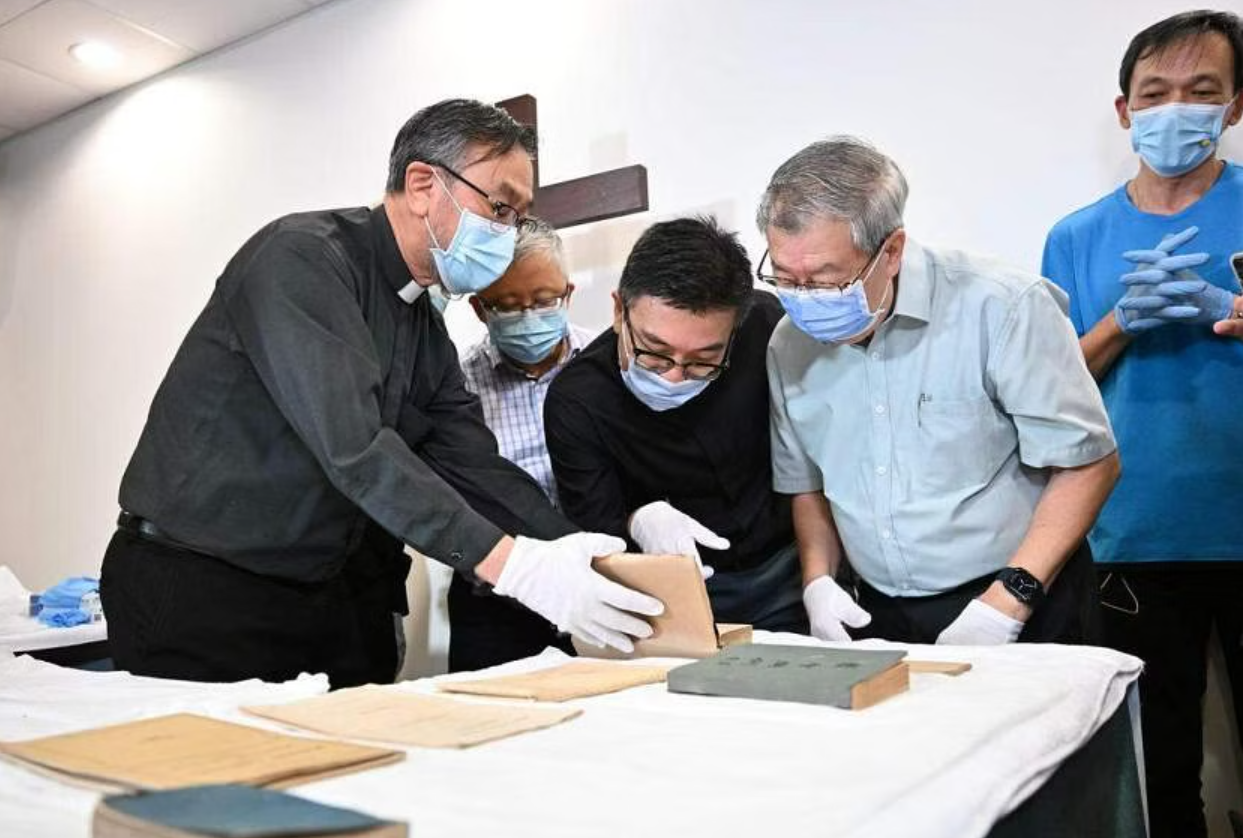
In front of about 100 church leaders and members on-site, and about 150 online, Wong unpacked the box on Feb 14, prising its lid open with a screwdriver before carefully removing each item in it.
Occasionally, a cloud of dust emerged from the box as each artefact was pulled out, and when they were flipped open.
Onlookers gasped as he presented each item to them, many amazed by the good condition the paper artefacts were found in — prints were legible, despite some rust and mould damage.
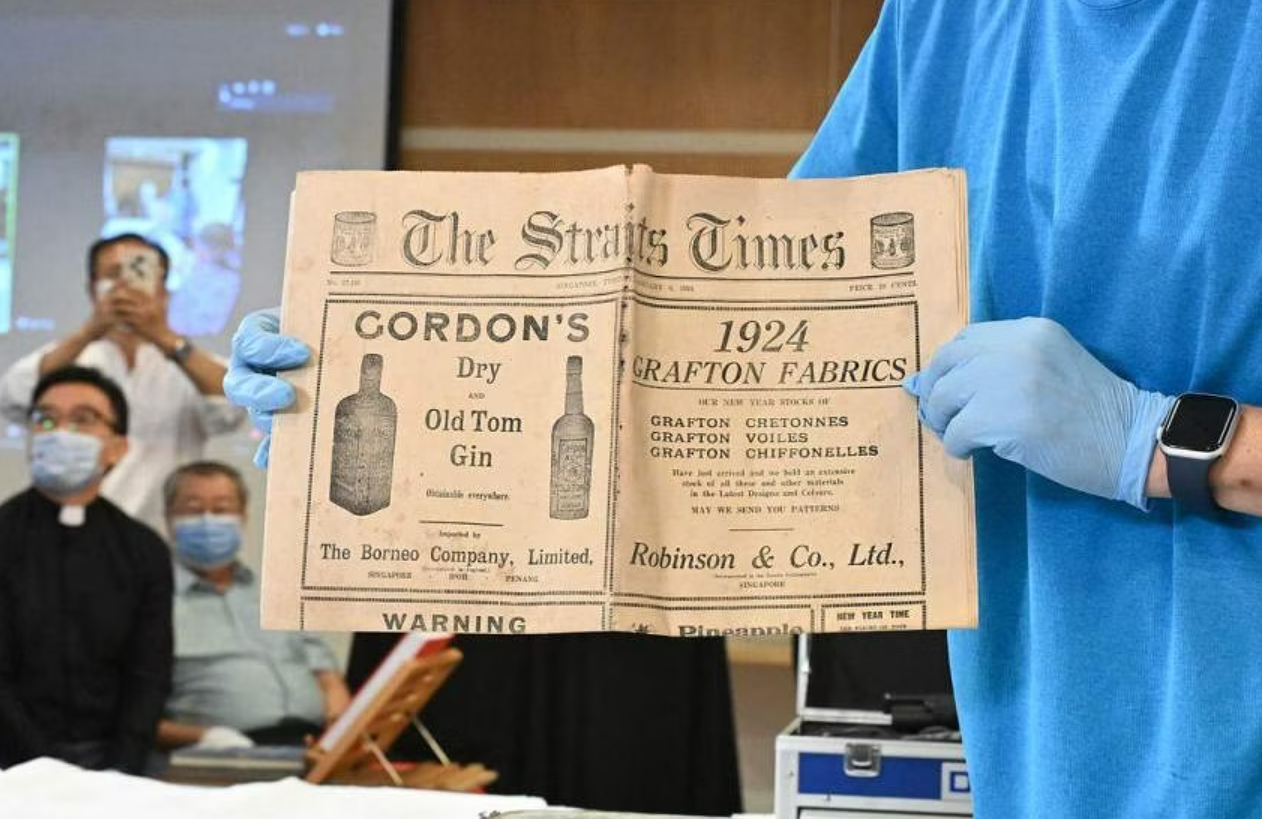
Tan Hua Joo, chairman of the Local Church Executive Committee, said the church intends to display the time capsule's contents in its new 2,345 sq ft heritage gallery come January 2025, and that it will be free for all to visit.
Reverend Edmund Koh, Telok Ayer Chinese Methodist Church's pastor-in-charge, said he hopes the capsule's discovery and extraction will inspire the church's current generation of members to, like their forefathers, "leave a beautiful legacy for those who come behind us".
ALSO READ: These honourees keep Singapore's living heritage alive
This article was first published in The Straits Times. Permission required for reproduction.